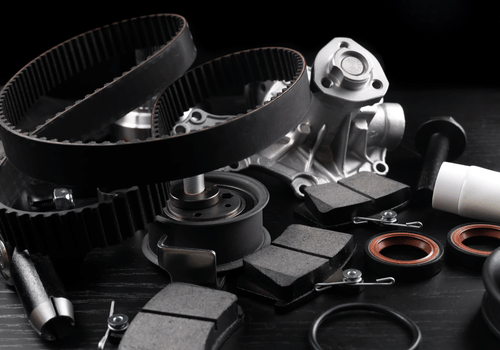The Auxiliary Belt - Function and Maintenance

Every car enthusiast knows about the engine, the transmission, and even the brakes, but what about the humble auxiliary belt? Often overlooked, this unassuming component plays a crucial role in keeping your vehicle running smoothly.
Understanding the Auxiliary Belt - What Does It Do?
The auxiliary belt, also known as the serpentine belt or drive belt, is a vital part of your vehicle's engine system. It's responsible for transferring power from the engine to various components such as the alternator, air conditioning compressor, power steering pump, and water pump. In essence, it keeps these essential parts functioning, ensuring optimal performance of your vehicle.
The Importance of Proper Maintenance
Now that we know what the auxiliary belt does, let's talk about why maintenance is crucial. Over time, the belt can wear out due to constant exposure to heat, friction, and tension. Cracks, fraying, or slipping can occur, leading to decreased efficiency or even complete failure. Regular inspection and maintenance can help detect issues early on, preventing costly repairs and breakdowns.
Signs of a Worn-Out Auxiliary Belt
How do you know when it's time to replace your auxiliary belt? Look out for warning signs such as:
- Squealing Noises
One of the most common indicators of a failing auxiliary belt is the presence of squealing noises, particularly noticeable when starting the engine or turning the steering wheel. This high-pitched sound occurs when the belt slips or loses traction on the pulleys, often due to wear or insufficient tension. Ignoring this warning sign can lead to further damage to the belt and other engine components. - Visible Cracks or Wear
Performing a visual inspection of the auxiliary belt can reveal telltale signs of wear and tear. Look closely for cracks, fraying, or visible wear on the belt surface. These physical indications suggest that the belt is nearing the end of its lifespan and should be replaced promptly to prevent unexpected failures. - The Ripple Effect
The auxiliary belt plays a crucial role in powering various engine accessories, including the alternator, power steering pump, air conditioning compressor, and water pump. Therefore, any malfunction or failure of these components could be a sign of a problem with the belt itself. If you notice issues such as dimming headlights, difficulty steering, or lack of cold air from the air conditioning system, it's essential to investigate the condition of the auxiliary belt.
DIY Maintenance Tips
Fortunately, maintaining your auxiliary belt doesn't have to be a daunting task. Here are some DIY tips to keep it in top condition:
- Regular Inspection: Take a look at the belt periodically for signs of wear and tear.
- Tension Check: Ensure the belt is properly tensioned to prevent slipping or excessive wear.
- Cleaning: Remove any debris or buildup that may accumulate on the belt, affecting its performance.
- Replacement: Follow manufacturer recommendations for belt replacement intervals, typically every 60,000 to 100,000 miles.
Spotted any of the signs we discussed, or is the time for a check-up near? Contact Eurotech Auto Service and schedule an appointment - we will take care of everything else.
More Automotive Service Posts










